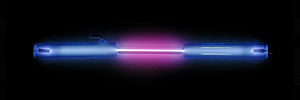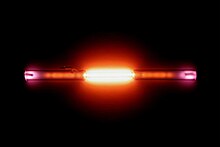| This is not a Wikipedia article: It is an individual user's work-in-progress page, and may be incomplete and/or unreliable. For guidance on developing this draft, see Wikipedia:So you made a userspace draft. Find sources: Google (books · news · scholar · free images · WP refs) · FENS · JSTOR · TWL |
 Purple glow in its plasma state | ||||||||||||||||||||||||||
| Hydrogen | ||||||||||||||||||||||||||
|---|---|---|---|---|---|---|---|---|---|---|---|---|---|---|---|---|---|---|---|---|---|---|---|---|---|---|
| Appearance | Colorless gas | |||||||||||||||||||||||||
| Standard atomic weight Ar°(H) | ||||||||||||||||||||||||||
| Hydrogen in the periodic table | ||||||||||||||||||||||||||
| ||||||||||||||||||||||||||
| Atomic number (Z) | 1 | |||||||||||||||||||||||||
| Group | group 1: hydrogen and alkali metals | |||||||||||||||||||||||||
| Period | period 1 | |||||||||||||||||||||||||
| Block | s-block | |||||||||||||||||||||||||
| Electron configuration | 1s1 | |||||||||||||||||||||||||
| Electrons per shell | 1 | |||||||||||||||||||||||||
| Physical properties | ||||||||||||||||||||||||||
| Phase at STP | gas | |||||||||||||||||||||||||
| Melting point | (H2) 13.99 K (−259.16 °C, −434.49 °F) | |||||||||||||||||||||||||
| Boiling point | (H2) 20.271 K (−252.879 °C, −423.182 °F) | |||||||||||||||||||||||||
| Density (at STP) | 0.08988 g/L | |||||||||||||||||||||||||
| when liquid (at m.p.) | 0.07 g/cm3 (solid: 0.0763 g/cm3)[3] | |||||||||||||||||||||||||
| when liquid (at b.p.) | 0.07099 g/cm3 | |||||||||||||||||||||||||
| Triple point | 13.8033 K, 7.041 kPa | |||||||||||||||||||||||||
| Critical point | 32.938 K, 1.2858 MPa | |||||||||||||||||||||||||
| Heat of fusion | (H2) 0.117 kJ/mol | |||||||||||||||||||||||||
| Heat of vaporization | (H2) 0.904 kJ/mol | |||||||||||||||||||||||||
| Molar heat capacity | (H2) 28.836 J/(mol·K) | |||||||||||||||||||||||||
Vapor pressure
| ||||||||||||||||||||||||||
| Atomic properties | ||||||||||||||||||||||||||
| Oxidation states | −1, 0, +1 (an amphoteric oxide) | |||||||||||||||||||||||||
| Electronegativity | Pauling scale: 2.20 | |||||||||||||||||||||||||
| Ionization energies |
| |||||||||||||||||||||||||
| Covalent radius | 31±5 pm | |||||||||||||||||||||||||
| Van der Waals radius | 120 pm | |||||||||||||||||||||||||
| Other properties | ||||||||||||||||||||||||||
| Natural occurrence | primordial | |||||||||||||||||||||||||
| Crystal structure | hexagonal (hP4) | |||||||||||||||||||||||||
| Lattice constants | a = 378.97 pm c = 618.31 pm (at triple point)[4] | |||||||||||||||||||||||||
| Thermal conductivity | 0.1805 W/(m⋅K) | |||||||||||||||||||||||||
| Magnetic ordering | diamagnetic[5] | |||||||||||||||||||||||||
| Molar magnetic susceptibility | −3.98×10−6 cm3/mol (298 K)[6] | |||||||||||||||||||||||||
| Speed of sound | 1310 m/s (gas, 27 °C) | |||||||||||||||||||||||||
| CAS Number | 12385-13-6 1333-74-0 (H2) | |||||||||||||||||||||||||
| History | ||||||||||||||||||||||||||
| Discovery | Henry Cavendish[7][8] (1766) | |||||||||||||||||||||||||
| Named by | Louis-Bernard Guyton de Morveau Antoine Lavoisier[9][10] (1787) | |||||||||||||||||||||||||
| Isotopes of hydrogen | ||||||||||||||||||||||||||
| ||||||||||||||||||||||||||
 | |||||||||||||||||||||
| Helium | |||||||||||||||||||||
|---|---|---|---|---|---|---|---|---|---|---|---|---|---|---|---|---|---|---|---|---|---|
| Pronunciation | /ˈhiːliəm/ | ||||||||||||||||||||
| Appearance | colorless gas, exhibiting a gray, cloudy glow (or reddish-orange if an especially high voltage is used) when placed in an electric field | ||||||||||||||||||||
| Standard atomic weight Ar°(He) | |||||||||||||||||||||
| Helium in the periodic table | |||||||||||||||||||||
| |||||||||||||||||||||
| Atomic number (Z) | 2 | ||||||||||||||||||||
| Group | group 18 (noble gases) | ||||||||||||||||||||
| Period | period 1 | ||||||||||||||||||||
| Block | s-block | ||||||||||||||||||||
| Electron configuration | 1s2 | ||||||||||||||||||||
| Electrons per shell | 2 | ||||||||||||||||||||
| Physical properties | |||||||||||||||||||||
| Phase at STP | gas | ||||||||||||||||||||
| Boiling point | 4.222 K (−268.928 °C, −452.070 °F) | ||||||||||||||||||||
| Density (at STP) | 0.1786 g/L | ||||||||||||||||||||
| when liquid (at b.p.) | 0.125 g/cm3 | ||||||||||||||||||||
| Triple point | 2.177 K, 5.043 kPa | ||||||||||||||||||||
| Critical point | 5.1953 K, 0.22746 MPa | ||||||||||||||||||||
| Heat of fusion | 0.0138 kJ/mol | ||||||||||||||||||||
| Heat of vaporization | 0.0829 kJ/mol | ||||||||||||||||||||
| Molar heat capacity | 20.78 J/(mol·K)[12] | ||||||||||||||||||||
Vapor pressure (defined by ITS-90)
| |||||||||||||||||||||
| Atomic properties | |||||||||||||||||||||
| Oxidation states | 0 | ||||||||||||||||||||
| Electronegativity | Pauling scale: no data | ||||||||||||||||||||
| Ionization energies |
| ||||||||||||||||||||
| Covalent radius | 28 pm | ||||||||||||||||||||
| Van der Waals radius | 140 pm | ||||||||||||||||||||
| Other properties | |||||||||||||||||||||
| Natural occurrence | primordial | ||||||||||||||||||||
| Crystal structure | hexagonal close-packed (hcp) | ||||||||||||||||||||
| Thermal conductivity | 0.1513 W/(m⋅K) | ||||||||||||||||||||
| Magnetic ordering | diamagnetic[13] | ||||||||||||||||||||
| Molar magnetic susceptibility | −1.88×10−6 cm3/mol (298 K)[14] | ||||||||||||||||||||
| Speed of sound | 972 m/s | ||||||||||||||||||||
| CAS Number | 7440-59-7 | ||||||||||||||||||||
| History | |||||||||||||||||||||
| Naming | after Helios, Greek god of the Sun | ||||||||||||||||||||
| Discovery | Norman Lockyer (1868) | ||||||||||||||||||||
| First isolation | William Ramsay, Per Teodor Cleve, Abraham Langlet (1895) | ||||||||||||||||||||
| Isotopes of helium | |||||||||||||||||||||
| |||||||||||||||||||||
- ^ "Standard Atomic Weights: Hydrogen". CIAAW. 2009.
- ^ a b Prohaska, Thomas; Irrgeher, Johanna; Benefield, Jacqueline; Böhlke, John K.; Chesson, Lesley A.; Coplen, Tyler B.; Ding, Tiping; Dunn, Philip J. H.; Gröning, Manfred; Holden, Norman E.; Meijer, Harro A. J. (2022-05-04). "Standard atomic weights of the elements 2021 (IUPAC Technical Report)". Pure and Applied Chemistry. doi:10.1515/pac-2019-0603. ISSN 1365-3075.
- ^ Wiberg, Egon; Wiberg, Nils; Holleman, Arnold Frederick (2001). Inorganic chemistry. Academic Press. p. 240. ISBN 978-0123526519.
- ^ Arblaster, John W. (2018). Selected Values of the Crystallographic Properties of Elements. Materials Park, Ohio: ASM International. ISBN 978-1-62708-155-9.
- ^ Lide, D. R., ed. (2005). "Magnetic susceptibility of the elements and inorganic compounds". CRC Handbook of Chemistry and Physics (PDF) (86th ed.). Boca Raton (FL): CRC Press. ISBN 978-0-8493-0486-6.
- ^ Weast, Robert (1984). CRC, Handbook of Chemistry and Physics. Boca Raton, Florida: Chemical Rubber Company Publishing. pp. E110. ISBN 978-0-8493-0464-4.
- ^ "Hydrogen". Van Nostrand's Encyclopedia of Chemistry. Wylie-Interscience. 2005. pp. 797–799. ISBN 978-0-471-61525-5.
- ^ Emsley, John (2001). Nature's Building Blocks. Oxford: Oxford University Press. pp. 183–191. ISBN 978-0-19-850341-5.
- ^ Miśkowiec, Paweł (April 2023). "Name game: The naming history of the chemical elements—part 1—from antiquity till the end of 18th century". Foundations of Chemistry. 25 (1): 29–51. doi:10.1007/s10698-022-09448-5.
- ^ Stwertka, Albert (1996). A Guide to the Elements. Oxford University Press. pp. 16–21. ISBN 978-0-19-508083-4.
- ^ "Standard Atomic Weights: Helium". CIAAW. 1983.
- ^ Shuen-Chen Hwang, Robert D. Lein, Daniel A. Morgan (2005). "Noble Gases". Kirk Othmer Encyclopedia of Chemical Technology. Wiley. pp. 343–383. doi:10.1002/0471238961.0701190508230114.a01.
- ^ Magnetic susceptibility of the elements and inorganic compounds, in Handbook of Chemistry and Physics 81st edition, CRC press.
- ^ Weast, Robert (1984). CRC, Handbook of Chemistry and Physics. Boca Raton, Florida: Chemical Rubber Company Publishing. pp. E110. ISBN 0-8493-0464-4.
- ^ Kondev, F. G.; Wang, M.; Huang, W. J.; Naimi, S.; Audi, G. (2021). "The NUBASE2020 evaluation of nuclear properties" (PDF). Chinese Physics C. 45 (3): 030001. doi:10.1088/1674-1137/abddae.



